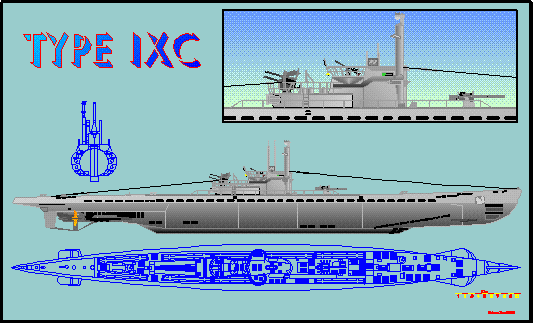I ended up looking around anyway and found this pic.

What amazed me is that the max depth was 750 feet. I served on the WWII diesel boats in 1951 and we sweated bullets when we tested 312 feet.
No small victory for that bomber. They sank an Ace.
Kapitänleutnant Friedrich Guggenberger
9 Sep 1940 Iron Cross 1st Class
10 Dec 1941 Knights Cross
8 Jan 1943 Knights Cross with Oak Leaves
15 ships sunk for a total of 43,098 GRT
1 auxiliary warship sunk for a total of 1,150 GRT
1 warship sunk for a total of 22,600 tons
1 ship damaged for a total of 6,003 GRT
In April 1941 he commissioned U-81. After three patrols in the Atlantic during which he sank two ships, he took the boat into the Mediterranean in November 1941. On 13 Nov, 1941, shortly after passing the Straits of Gibraltar, he torpedoed the British aircraft carrier HMS Ark Royal (22,600 tons), which sank one day later.
After six further successful patrols in the Mediterranean, Guggenberger left the boat in early 1943 and for three months was a member of Dönitz’s staff.
In May 1943 he took over U-513, a Type IXC boat, but was sunk on the first patrol on 19 July 1943 in Brazilian waters by an American aircraft (Niestlé, 1998). The badly wounded Guggenberger, along with six additional survivors, spent one day in a life boat at sea before being picked up by the US cruiser USS Barnegate.
After an operation and a long time in hospital he was transferred to Fort Hunt on 25 September, 1943; then to the POW camp at Crossville later that month; finally arriving in the Papago Park camp near Phoenix, Arizona (USA) in late January 1944.
Escape from Papago Park, Arizona
On 12 February, 1944, Guggenberger and four other U-boat commanders escaped from this camp. Guggenberger and his traveling companion August Maus were recaptured in Tucson, Arizona. Guggenberger was also one of the 25 POWs who escaped from this camp during the night of 23-24 December, 1944. On 6 January, 1945 he and his companion Jürgen Quaet-Faslem were captured less than 10 miles from the Mexican border.
Guggenberger was transferred to Camp Shanks, New York in February, 1946; then to a compound in the British zone of Germany, near Münster. He was released from Allied captivity in August 1946.
After the war he became an architect, before joining the German Navy, now known as the Bundesmarine, once more in 1956. After graduating from the Naval War College in Newport (USA), he was as Konteradmiral the Deputy Chief of Staff in the NATO command AFNORTH for four years. In October 1972 Guggenberger retired.
On 13 May, 1988 he went on a stroll in the forest and never came back. His body was not found until two years later.
I ended up looking around anyway and found this pic.

What amazed me is that the max depth was 750 feet. I served on the WWII diesel boats in 1951 and we sweated bullets when we tested 312 feet.
Thanks for the info